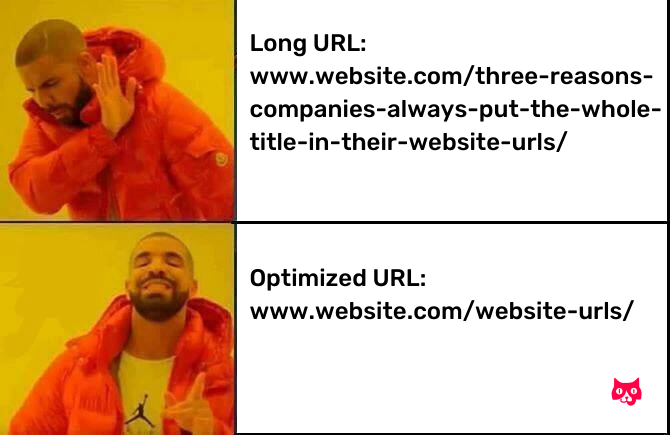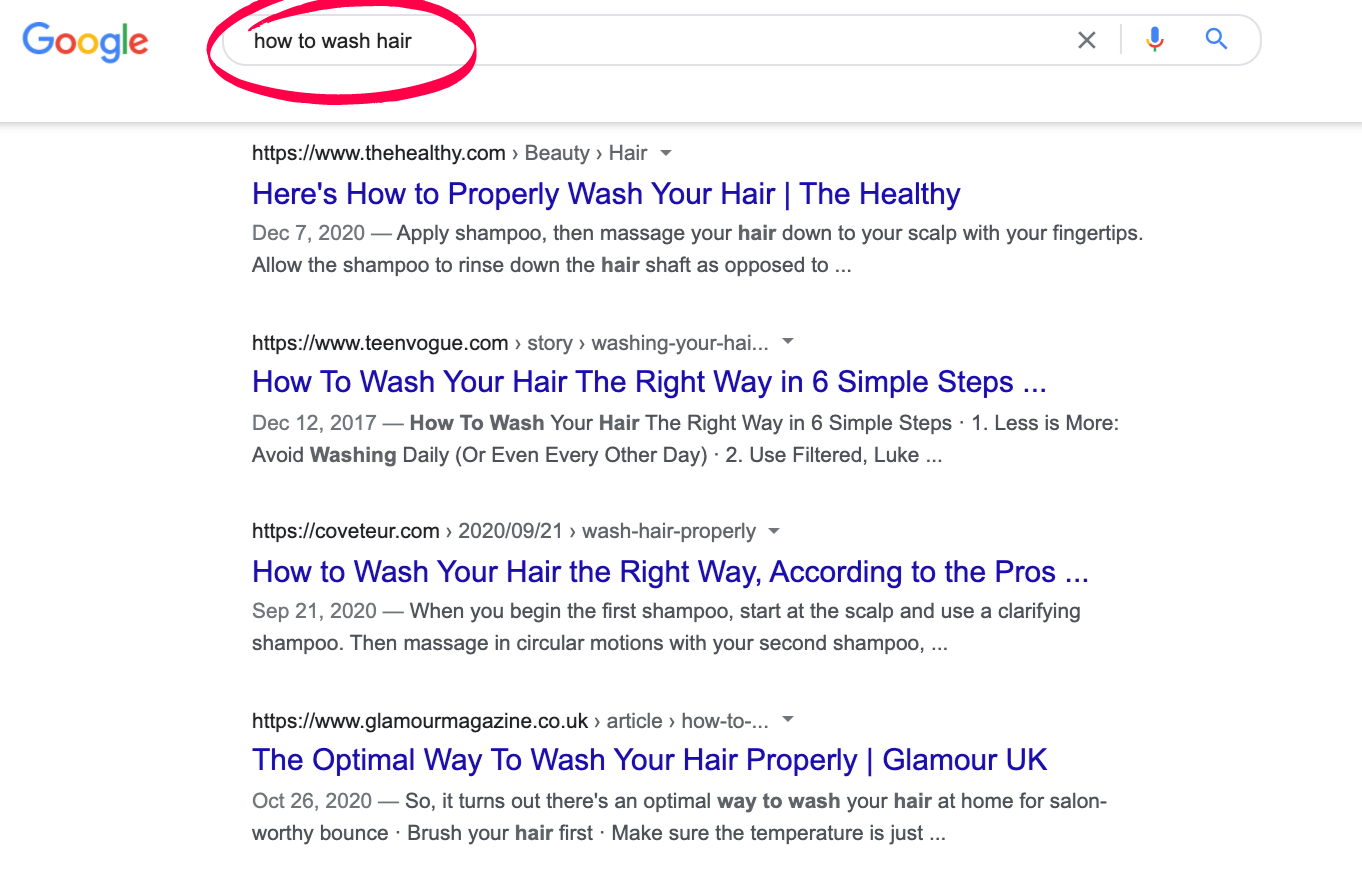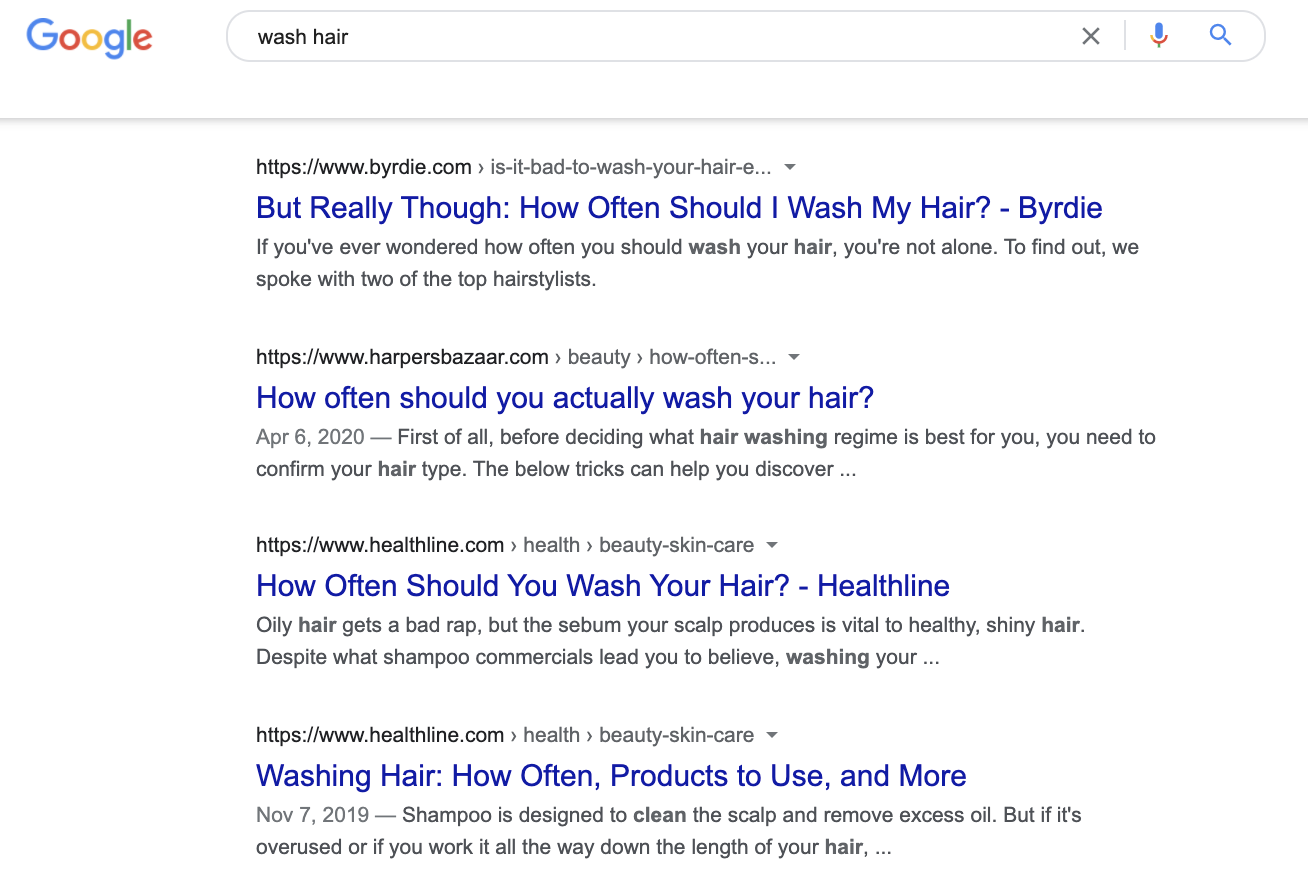Instead of paraphrasing all the other SEO best practices articles on the internet, we asked 40 SEO professionals what their best practices are. These experts have followed and used these practices to get a collective millions of visits per month.
Plus, this guide doesn’t only focus on best practices for traffic—but conversions, too.
In today’s post, we’re going to cover tried and true 16 best practices from some of the most respected SEOs around. SEO is a very “it depends on the context” kind of marketing channel, but these best practices can be generalized across any industry and website.
What are SEO best practices?
SEO best practices are the most successful optimization strategies used by a company in order to achieve high search engine rankings. SEO best practices are important for generating more organic traffic to your website, but also to ensure that traffic is qualified and converts.
Companies can implement different kinds of SEO strategies depending on the structure of their organization, the content they create, and whether their target market is B2B or B2C.
SEO best practices from experts who have done it before
We asked a bunch of SEOs what tactics are actually working today. Here’s what we found.
1. Pair SEO with content marketing
Publishing long-form content regularly is table stakes for SEO.
You simply can’t rank without it.
Even the best-optimized landing page needs the support of topically relevant content linking to it. Google doesn’t care about keywords anymore—it cares about topical relevance.
Starting creating well-written content around your topic, and you’ll see rankings rise. Chantelle Marcelle, Head of Growth at PromoPrep, says “SEO has evolved greatly over the past 10 years. I remember when you could create a web page and rank very easily just by following a set template.
Volume of keywords and other technical checkpoints were the main things that mattered. But now we’re seeing algorithms become more sophisticated and nuanced.
Depth and quality of content matter much more, and improving rankings on SERPs can be a complex endeavor. It’s great news for all of us because it means search results are more aligned with what searchers are looking for.
And it’s forcing us as marketers to increase focus on creating valuable, high-quality content on a consistent basis. In general, the shift can be summed up as writing for humans rather than writing for algorithms.”
Create user-focused content. Use our guide for interviewing customers.
CREATE CONTENT FOR GROWTH
2. Increase content publishing velocity
In the quality vs quantity debate, quality still wins. However, publishing velocity is a factor we see drive the fastest SEO results. The fastest you can publish consistently while keeping quality up, the better results you’ll see. That’s just math.
Luka, Head of SEO and Content Growth at Content Horse, says that “trying to rank for a particular keyword can be hit or miss at times. There are too many factors in place, and some of them are to a lesser extent in your control. My strategy has been to write a more significant number of posts”
When we increased publishing velocity by only 1 post per month, we saw a 123% increase in traffic for our client:

2. Your title tag and meta description are still vital
Your title tag is the clickable headline that shows up on the results page.
If you do manage to rank, your title tag is the #1 thing that’s in between your page and your user.
Your title tag is what makes them decide whether your content is relevant to them or not.
Remember that your title tag should:
- Be within 50-60 characters
- Include the primary keyword
- Match the search intent
- Be descriptive and concise

The meta description is the text that goes right underneath the title. Google sometimes chooses its own meta description, but you should write one anyway. Be sure to keep “clicks” in mind.
How can you describe the article in a way that makes the searcher think it’s the right one for them?
3. Use primary keywords for URLs
Don’t save your content as the title of the piece.
A good URL structure helps both Google and the user quickly understand what the piece covers. Optimize your URLs to be just the primary keyword. Keep things short!

Here are some other tips about optimizing your URLs:
- Even if the title has a year in it, never add years or dates to URLs. That way, you can keep updating the same piece every year and keep the SEO you’ve built.
- Always include primary keywords in your URL
- Remove unnecessary stop words
4. Frontload your meta title with your keyword
Simply put, that means putting your keyword first:

Josh Spilker, Head of Marketing at Friday says he managed to move articles up from page 2 to page 1 doing this, without changing the content. Further, he shared, “frontloading the metatitle with your keyword usually has a measurable impact, especially when the rest of the SERPs and the pages you’re competing with are doing this.”
5. Match your content to search intent
Search intent is the purpose behind the query.
It’s how Google knows that “what does a 2 month old cat eat” means “kitten food”.
If you don’t match your content to search intent, 2 things will happen:
- You will not rank
- If somehow you do, your user will leave
All the pages that make it to page 1 of Google have been “approved” as matching search intent by Google. For example, if I search for “how to wash hair”, I’ll see two things:

The two things are:
- The intent is someone looking for a how-to blog post
- An additional intent is how to do so “properly” or “the right way”.
Alternatively, if I search for the keyword “wash hair”, I can see that the search intent is different. Meaning, I’d have to create two separate articles for the keywords “wash hair” vs “how to wash hair”. See below:

See the difference in results? Always keep searching intent in mind while creating content for your website.
6. Focus on user experience
Google keeps track of how people behave on your page.
If someone clicked, realized it wasn’t for them, and exited?
Google knows.
A visitor spent a whopping 5 seconds on your page before saying see ya later?
Google knows. And Google doesn’t like it. Neither do your users.
Make sure your UX doesn’t ruin a searchers’ experience while consuming your content. You wouldn’t want page speed or a desktop layout that doesn’t translate well to mobile to take away from your content itself.
Ways you can improve UX for SEO:
- Create a lot of white space: Break up your paragraphs, use bullet points, and divide your piece with subheadings. Make it easy to skim. White space actually helps people understand your content better.
- Use visuals where possible: Even screenshots can provide a lot of value to a piece. Use images and visuals to help people understand your content better.
Time to scale your SEO?
Work with an agency that’s done it before
7. Don’t keyword stuff
Keyword stuffing is exactly what it sounds like: trying to get your keyword in as many times as possible. It’s a black-hat SEO tactic that can get your website penalized.
A perfect example of this is those really long and bizarre listings you’ll find on e-commerce platforms like Amazon or Aliexpress that read ‘Hip Hop T-Shirt Funny Vintage Street Wear Hipster Parod Shirt Rock T-Shirt Graffiti Short-Sleeved T-shirt,’ when all you really searched for was ‘blue shirt’.
Google’s algorithm doesn’t work on a keyword basis anymore—rather, a topical one. Instead of focusing so much on keywords, try to dominate a topic, and you’ll begin to rank organically.
8. Build quality backlinks
You wouldn’t have a post about SEO best practices without a section on backlinks.
External links pointing to your website are still one of Google’s favorite ranking factors.
Damian Sheridan, Director of the Book Direct Show, saw a 500% increase in traffic with link building alone. He says “search engine updates are numerous but one thing remains constant – the value of high quality links to your website. Taking the time and effort to create the best content helps enormously for gaining authoritative inbound links.”
Sandra Kaminska-Paciorek from Nibble Vid builds her backlinks through HARO:
“We have been really successful in generating links through HARO, which have helped our SEO presence to take off. Apart from responding to the queries posted by journalists seeking expert commentary, we’ve been running a link building campaign on the side as well as experimenting with creative digital PR.”
9. Prioritize content operations
Content operations are the frameworks and systems used to create SEO content at scale.
Alina Benny, Sr. Content SEO Lead at Nextiva, saw +382% net growth in all organic traffic since she started implementing content ops:

Alina Benny, Nextiva
Content Operations
“If you’ve ever wondered how companies like Shopify, HubSpot, or even Nextiva fortify their rankings AND still find opportunties to grab net new traffic, this is how. Over the last three years, we’ve meticulously pruned our content ops engine to give us laser-sharp focus on how we plan, produce, distribute, and optimize content. Each step — from keyword ideas to content briefs and re-optimization opportunities — is carefully laid out on an internal Kanban-style board. Pipeline stage, dependencies, timelines, and reminders are automated. All associated content research, docs, and references live on their dedicated tickets, too.”
10. Create collaborative content
Collaborative content is a way of developing unique and creative content that can still satisfy a specific segment.
Jonas Van De Poel, the head of content and community at ShopPop, explained to us that one collaborative blog post of theirs done about e-commerce and Shopify, generated more than 32% of their website traffic only in the 72 hours after publishing. The article improved ShopPop’s user’s leads and, ultimately, conversions too.
According to Jonas: “Why this type of collaborative content works well, partly, is due to its network effect – all participants were more than happy to take up their share of content distribution. Especially since their advice was listed as part of a ‘Top Shopify Agencies in [Region]’ article.
The article was framed as an award, including badges that were sent to participants which they could use for their own marketing purposes. Several companies added these badges to their websites, linking back to the article, resulting in high-quality backlinks.”
11. Use interrogative search modifiers
Viictory Media owner, Schieler Mew says, “The #1 tactic we are currently using for national websites is ranking interrogative searches with modifiers such as ‘who, what, when, where, why, and how,’. When these informational searches are combined with CRO tactics they are not only increasing total traffic to our websites but opt-ins and conversions!”
Adding interrogative modifiers helps find long-tail variations of your keyword and capture very specific intent. People ask Google questions all the time—be there to answer them!
12. Leverage Frequently Asked Questions
Nigel Stevens, CEO at OGM, says “Add an FAQ section to the bottom of the page to knock out some of those ‘related questions’ that help your page be more relevant for the search intent. Then use rich markup. It still works and is still underutilized.”
James Johnson of Soar Digital explains that this allows you to address those additional questions searchers may have without interrupting the narrative of your content.
It’s “more efficient crawling and indexing of the site” and resulted in a 180% increase in organic conversions for their company.
13. Build pillar pages and topic clusters
Pillar pages are the “hub” in a “hub-and-spoke” approach to SEO content creation. One super-comprehensive post that ranks for a broad keyword and links out to all the sub-topics in the same cluster.
Shana Haynie, Director of Demand Generation for Hearst Bay Area, attributes an increase in over 200% of organic traffic to this strategy.
“These super long-form posts typically contain over 4000 words and target a broad category (like “social media marketing,” for instance).
Inside each Pillar post, we touch on each of the top searched sub-topics for the category and include links out to other more in-depth articles that explore those sub-topics on a deeper basis. As a result, we’ve steadily grown our website traffic from organic search for all of our Pillar topics and their subsidiary articles. The strategy is called “Pillar Posts and Topic Clusters.””.

An example of a pillar page with links pointing to sub-topics
14. Build authority around the BOFU
Focus on the audience that’s ready to buy before you build top-funnel content. That said, bottom-of-the-funnel tends to have lower volume keywords.
Preply’s content marketer, Thomas Cox, suggests not to get charmed by search volume.
“Focus on content topics for people who are highly committed to achieving a solution. After a content audit, you may find that a huge chunk of blog traffic is targeting high-volume keywords but generating no business impact. Instead, build authority around middle to bottom of funnel keywords, and you’ll start to see a direct impact from your content.”
-Thomas Cox, Preply.
Petra Odak, CMO at Better Proposals, also found higher conversion rates by sticking to the bottom of the funnel: “Changing our approach from high-volume to smaller-volume keywords with more purchase intent. Basically, we choose keywords which have a higher likelihood of resulting in conversions, without paying so much attention to traffic.”
Related Post: B2B SEO: 8-step Holistic Strategy You Wish You Started Yesterday.
15. Check Google Search Console for opportunities
Marcos Sabino, SEO Manager at TravelPerk, says “One of my favourite tactics is to check Search Console for keywords with a high number of impressions but virtually no clicks. Any keyword registering a solid number of impressions but no clicks is much likely lingering at the bottom of Google’s first search results page .
This means that Google already considers our content authoritative enough to give it a 1st page placement but we’re still not quite there in terms of relevance.
From there we can decide whether we only need to add a small section to an existing page or need a new content piece altogether that addresses the user query in a more relevant way.”
SEO best practices: what are the next steps?
SEO best practices are a good place to start, but they’re not always enough. You’ll have to keep learning about SEO and testing new things. Your website, industry, and many other factors all play a role.
Frequently Asked Questions about SEO Best Practices
What is SEO?
Search engine optimization (SEO) is a long term marketing strategy that helps a company to rank on different search engines like Google. SEO focuses on understanding the algorithm and ranking factors of a specific search engine and optimizing content organically instead of relying on a PPC format.
Related post: SEO Statistics For 2021 You Should Know
What are the 3 pillars of SEO?
The 3 pillars of SEO are on-page SEO, technical SEO and off-page SEO. Each play an important part on getting your website to rank on search engines.
What are the top SEO tools?
Top SEO tools are the tools used that optimize your content in order for it to rank highly on search engines. The top SEO tools include Google Search Console, SEMrush, and Google Analytics.
If you’re looking for ways to up your SEO, check out this post where we spoke to experts and found 37 of the best free SEO tools out there.
